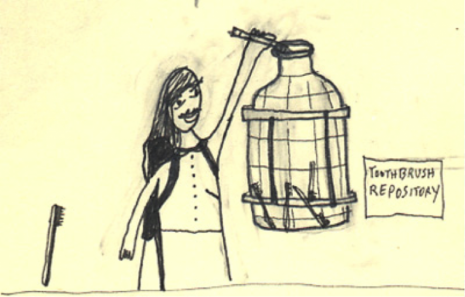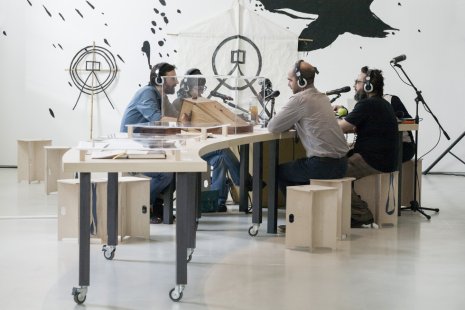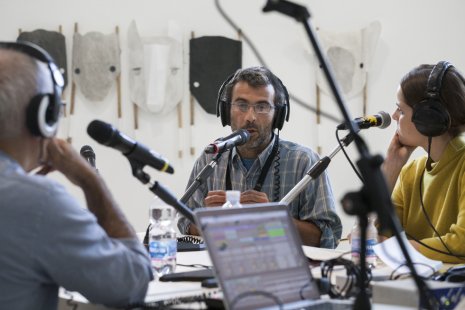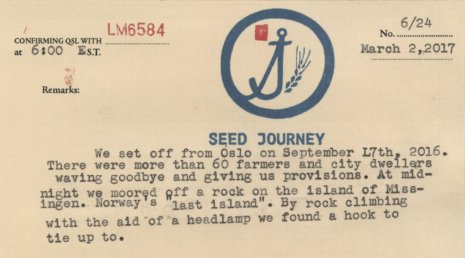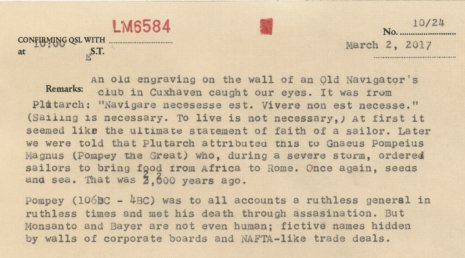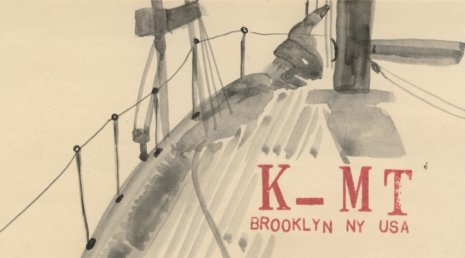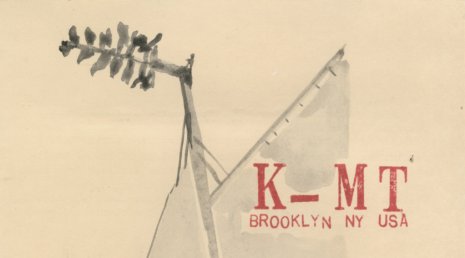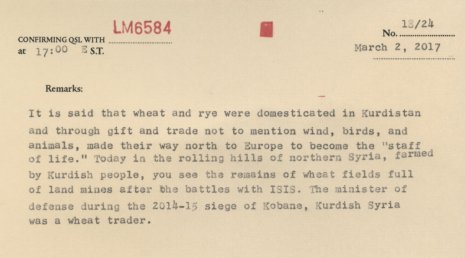Renny Pritikin:
I did some research a few years ago for a project in which I tried to make a list of the ten most important Bay Area art exhibitions since 1950. I included Peter Selz’s Funk show at Berkeley in the 60s. It was interesting because in hindsight he got a lot of things wrong, lumping in artists who were merely surrealists (old paradigm) with the funk people (postwar paradigm). Anyhow, I recently met two artists whose work made me think of yours, but I’m wondering if you see them as colleagues on the same path, or interesting but essentially different. One artist is named Todd Shalom and he has been taking groups of people on walks to experience both the world and the art world. Participants are not just passive but get involved in making and performing together. The other is Abraham Burickson who makes performances for one person. These are often very elaborate involving kidnapping, even being buried alive (with a breathing tube!), that involve weeks of research and planning and many participants to pull off, and can be several days long.
Of course in the Bay Area we have the Ribbons events by David Wilson taking people to celebrations in the woods, and had the guided tours by Kate Pocrass that pointed out odd visual ironies.
What do these practices have in common, or make them distinctively less of interest, to Futurefarmers?
Amy Franceschini:
The artists you mention are friends who I admire and have participated in their work. I see our work aligned by a shared interest to paying attention, draw attention and celebrate: Kate Pocrass to the “mundane.” David Wilson to the “overlooked”, (people, places). And the intimacy of a one-one one performance as you mention Shalom’s work whom I have never met.
I feel very inspired by earlier Bay Area artists such as Joe Hawley and Mel Henderson, Bonnie Sherk. Joe Hawley was a ceramics teacher of mine at San Francisco State, although he made actions/interventions with Mel Henderson. Joe would say, “art is a verb.” After ceramics class, he would invite a handful of students to his studio for beer and food. He would often slip a VHS in to share his performative works, Searchlights, Oil, and Yellow Cabs. These works simply blew my mind as an 18-year-old art student. A great history of this can be seen
here.
At this time in 1991 the Gulf War had begun and students were occupying the quad at SF State. There was a tent city on the main lawn for months and many actions fueled by our new knowledge and possibility for mixing art and action.
A fellow student created an anonymous project. In the main hallway of the art building at SF State, a glass water bottle appeared un-announced upon the wall with a small handwritten sign next to it: "Toothbrush Repository” It remained for several months slowly filling with used toothbrushes. I never saw anybody putting a toothbrush in the bottle and nor did anyone else; so a myth began to build that these anonymous creator(s) were filling it themselves. It became something people were curious about and it made me look at all the unused brushes that had accumulated in our home and ask myself questions about these brushes — who they belonged to, why we did not throw them away, were they of some value...etc. I scooped up all five of the unused toothbrushes and dropped them in the “repository" at school. (We were all enrolled in a Contemporary Art History class, so Kaprow was a phantom collaborator.)
This point was pivotal; my relationship to this art object changed. I became a contributor, a participant, and as the bottle filled to the brim with brushes, all the contributors became more curious about what was to become of these brushes. Was this the end of the piece once it was full? Where would all the brushes end up?
The creators of the Toothbrush Repository let the bottle stand full with brushes for some months letting the curiosity build and then disappear, as we all imagined that this was the end of the piece and that it would be there indefinitely. Slowly interest diffused and the piece almost disappeared into the architecture like a permanent fixture.
In February of 1991, another student, Crystal Alexander, an international relations major and part of a group of students who called themselves Students for Peace, conceived the idea of building a makeshift shanty town that, for them, would symbolize what Baghdad might look like after allied forces, led by the U.S., bombed the real Baghdad. The shanty was located on the main lawn directly in front of the student center and administrative offices and was referred to as "Little Baghdad." The structure grew daily and there were 24-hour protests.
At the same moment of the shanty village, during a Contemporary Art history lecture, we heard a loud crash in the hallway. The sound was recognizable as the sound of the glass "Toothbrush Repository" breaking and hitting the ground; several of us got up and ran out to see who was behind this action. By the time we entered the hallway, only the footsteps of the culprit could be heard. The armature holding the bottle up was still on the wall and a shower of broken glass lay on the floor. While the sound of footsteps echoed in the hallway...the author remained invisible...to most.
I recognized the sound of the footsteps. It was a friend of mine who wore large Birkenstocks and I recognized the flapping of the soles on the cement. I ran with all of my might to his studio. I saw him, but he disappeared with a bucket full of toothbrushes. The next day, I caught up with him and begged him to tell me about the project and what he was going to do with the brushes. He told me the project was really very simple: to make an object to collect toothbrushes. He had installed the piece with a friend and they had never even imagined that people would participate. In fact, they would have been happy if the bottle stayed empty, but as it filled everyday and he felt there had to be a second life to this project and that the brushes must have an extended presence but he did not know what he would do.
School administrators threatened to remove Little Baghdad. As a result the protesters refused and the shanty grew and included an oil well, a study hall, and…
One day as I was walking through the main lawn past the shanty, I noticed something new. There was a man sitting on the grass dressed completely in white in front of what looked like a miniature military graveyard. As I got closer I recognized my friend and the objects he was placing in the ground to represent gravestones were the toothbrushes. My friend Christopher sat silently painting toothbrushes white and placing them in rows in the grass.
For me, this piece set in motion a number of thoughts in regards to art and life and art and action. This small graveyard survived for a few weeks - a haunting, poetic image. By transforming the colorful toothbrushes into a field of white sticks in the lawn, a grounding occurred, putting us all in common, all implied in the casualties of war and how they connect to our everyday life.
RP:
Amy, you want to talk about being out at sea?
AF: [written from the sea]
The landless horizon is infectious. I was sure I was a land person until a few years ago, when an un-ignorable drive to learn how to sail came upon me.
It wasn’t really so much a desire to sail that drove me to take lessons at first, it was the desire to give a small wooden sailboat its maiden voyage. A friend had made by a boat by hand. Bless her, she had built a boat as a way towards a more skilled craftsmanship as a furniture designer/architect. She did not know how to sail, nor was this her modus operandi. Her boat was in storage, and I could not bear to think of this beautiful little craft sitting in a dark garage in the Mission district – so I proposed we take lessons and get this little craft– a float, a drift… heaving.
Each time, I stepped onto our boat during lessons, I felt a great lightness, awakening and calm upon me. When sailing, there is really no time, but the present – every sense is awakened and used to tend to the path of sail. You must be fully present in the NOW and this for me was the catch. For so much of my last years, I have spent so much focus on the future – calendars, plans and imagining of.
As of September 2016, I have been on board an 1895 wooden rescue sailboat named RS 10 Christiania en route to Istanbul. She is our mothership for a project called Seed Journey with a rotating crew of 16 artists, anthropologists, bakers and farmers. We use grain as a prismatic lens to consider the interrelationship of food production to realms of knowledge sharing, land use, cultural production, socio-political formations and everyday life. Each crewmember brings their perspective to this shared inquiry and expresses it through various media at host institutions along the way.
Seed Journey is sailing along this route to draw attention to the co-existence of agents - human and non-human - that tend to the land and protect the right to share seeds and knowledge openly. Seed Journey culminates in Istanbul at SALT/Galata where the entirety of its content production will be displayed as an exhibition, public program and seed swap located in an informal vegetable market. The re-tracing backwards the routes of these seeds and their cultures re-signifies these voyages from the 21st century vantage of having lost our flotation, lost our way; a “reverse Nansen”, “reverse Humboldt”, reverse “Darwin”, Cook, Magellan or whatever traveller you may want to choose.
Seed Journey can be called a museum-event, an art movement with no fixed location. It is a traveling school that provides a novel space and opportunity for debate and stimulation in the various ports where it drops anchor. It is an illustration in itself of low-tech, craft-oriented, open-source solutions to global warming in which the maxim is not the domination of nature but the mastery of non-mastery as with the use of wind to fill the sails.
Seed Journey was represented in the most recent biennale in Sharjah as a Seed Mast and a series of postcards.
The Seed Mast sculpture functioned as antennae to transmit and receive messages from the sea-faring journey.
So back to the sea..
While at sea, I fell in love with the various methods used to remember; metaphors on how to tie knots, repetition and the legacy of storytelling in general.
A project that I developed during the journey is called Recordings for the Birds, a strategy for documentation of the journey that wishes to mirror the slowness of sail and the span of time embedded in the ancient grains on board.
During the first leg I collected four stories. For an exhibition in Cardiff, Wales I presented them as a performative installation whereby: audio recordings of these stories were made into a 78 vinyl record and were played weekly on a gramophone. Each week a local actor followed a set of instructions that involved listening to each story and retelling the stories to an audience.
********
Renny Pritikin is the Chief Curator at The Contemporary Jewish Museum in downtown San Francisco. He writes exhibition catalog essays, critical writing, and has published four books of poetry, most recently A Quiet in Front of the Best Western. In addition to Amy Franceschini, he has worked closely with Fred Tomaselli, Ricky Jay and Don Ed Hardy, among others, beginning in the last decades of the twentieth century.


